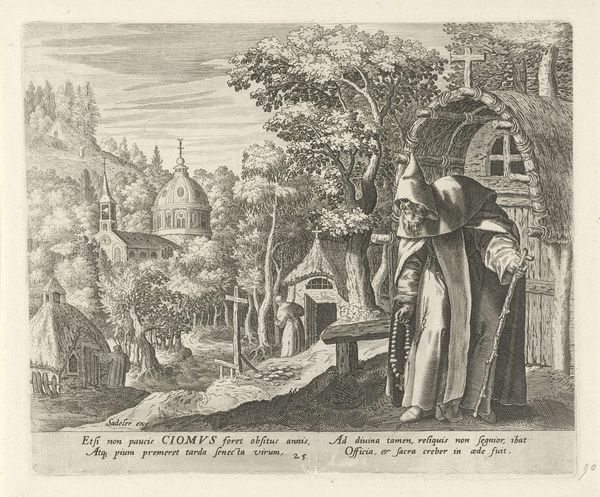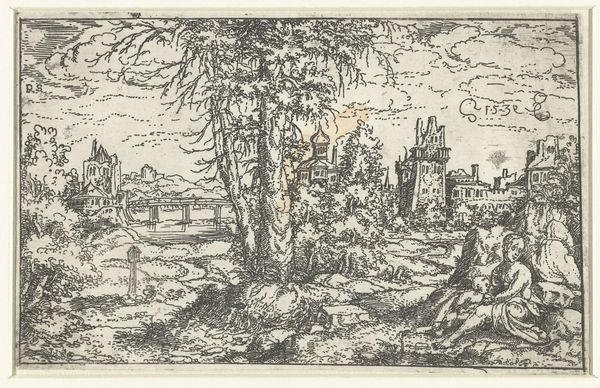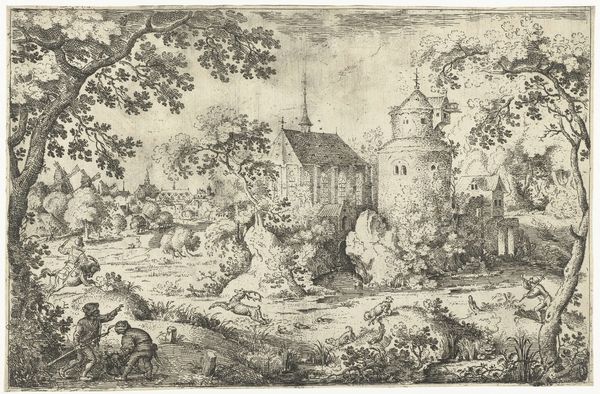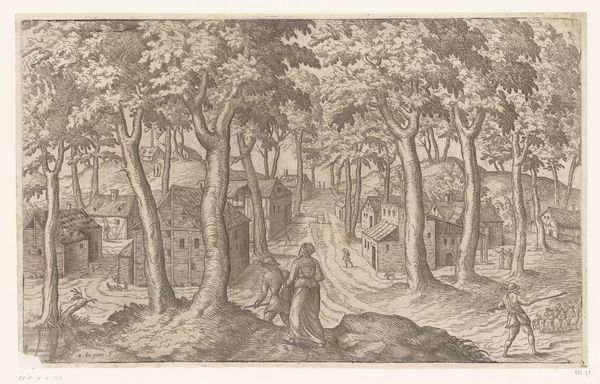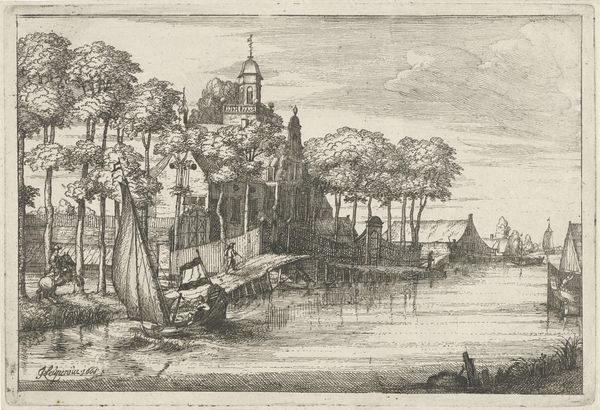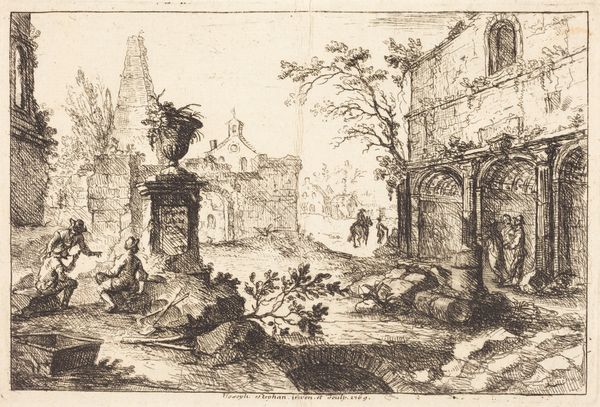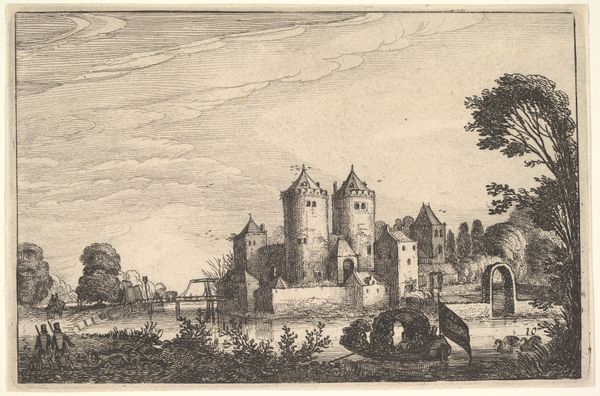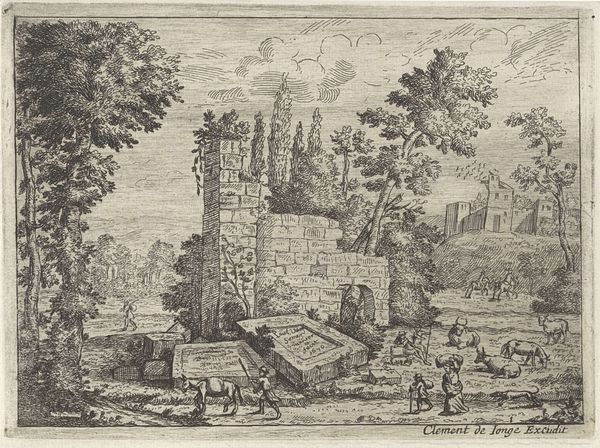
drawing, print, etching
#
drawing
#
baroque
#
pen drawing
# print
#
etching
#
landscape
Dimensions: height 111 mm, width 164 mm
Copyright: Rijks Museum: Open Domain
Claes Jansz Visscher created this print, 'Landscape with the Road to Emmaus,' in the Netherlands sometime between 1600 and 1650. It depicts a biblical scene—Christ appearing to two disciples after his resurrection—within a meticulously rendered Dutch landscape. The print reflects the cultural milieu of the Dutch Golden Age, where landscape painting flourished alongside religious and genre scenes catering to a prosperous merchant class. Visscher capitalizes on the period’s taste for detailed realism; note the imposing architecture, the trees that frame the composition, and the figures in conversation. Yet, it also subtly incorporates religious narrative within this burgeoning secular style. To truly understand this work, we can research the cultural values of the Dutch Republic, the role of religious art in a Protestant society, and the rise of landscape as a distinct genre. Such inquiries would reveal the complex interplay between faith, commerce, and artistic innovation in the early modern Netherlands.
Comments
No comments
Be the first to comment and join the conversation on the ultimate creative platform.
